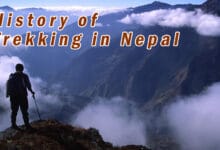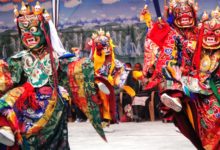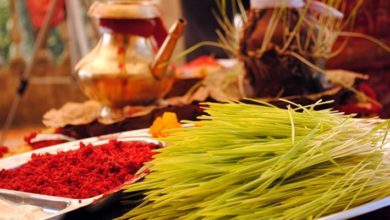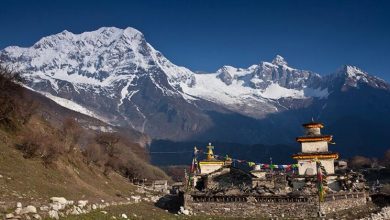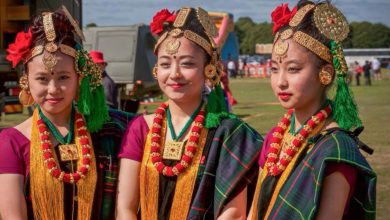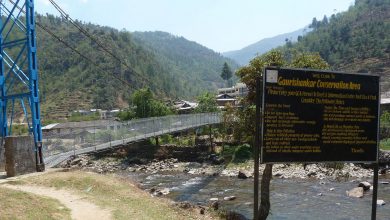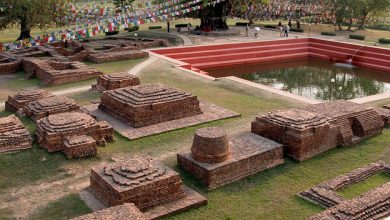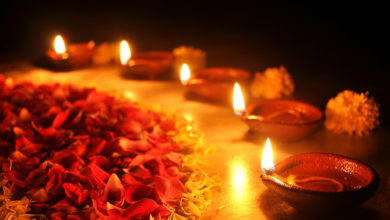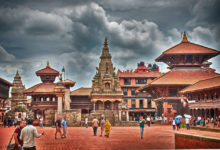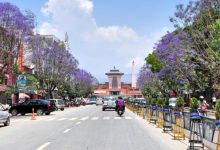Lakes of Nepal
Nepal is home to a variety of stunning lakes, each with its own unique features. Here are some notable lakes in Nepal
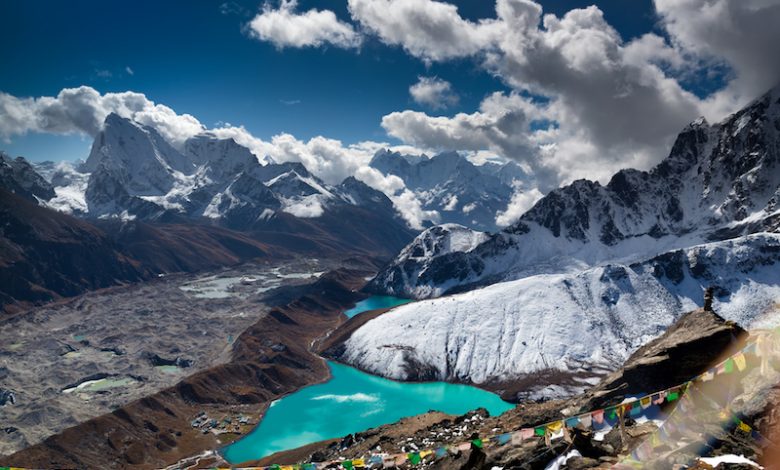
Nepal boasts an impressive array of lakes, each with its own unique charm. It is home to some of the most amazing and picturesque lakes in the world, many of which are glacial-fed high-altitude lakes situated at over 4,000 meters.
Featured here are seven amazing lakes that you should definitely consider visiting on your next trip to Nepal or Trekking in Nepal. Some are well off the beaten path; others are more easily accessible, so there will be a lake experience here to suit your plans.
Nepal is the second-richest country in water-resources. The glacial flow and the melting of the snow of the mountain peaks give way to gorgeous rivers, lakes and various water-bodies- making Nepal a marvelous destination that is home to acreage of many sapphire Himalayan drinks of water tucked away on mountain crevasses.
Many of the lakes of Nepal hold religious and traditional significance and have visitors and pilgrims excursing to them from all over the world. Adding more beauty to the terrain, the cerulean lakes of Nepal are the country’s jewels that enhance the beauty of the overall landscape.
The lakes of Nepal are a natural phenomenon that takes the role of important signees of the region they are located at. Here are some famous and important lakes in Nepal.
Rara Lake
Rara Lake, also known as Mahendra Lake, is the largest freshwater lake in the Nepalese Himalayas. It is the main feature of Rara National Park, located in the Jumla and Mugu Districts of Karnali Province.
The lake stretches over 10.61 square kilometers and lies at an elevation of 2,975 meters. Its water surface covers 10.8 square kilometers, with a maximum depth of 167 meters. Rara Lake drains into the Mugu Karnali River via the Nijar River.
Interestingly, the lake changes its color up to five times a day depending on the climate. The surrounding hills, including Chuchemara Danda and Murma, offer breathtaking views, and during the summer season, migratory birds from as far as Siberia can be found in the area.
How to reach Rara Lake: Fly Kathmandu – Nepalgunj – Talcha airport. Walking for 3 hours from Talcha
Gokyo Lakes
Gokyo Lakes, located in Nepal’s Sagarmatha National Park, are a remarkable natural wonder. These oligotrophic lakes sit at an impressive altitude of 4,700–5,000 meters (approximately 15,400–16,400 feet) above sea level. Their name is derived from the nearby Gokyo Ri peak. What makes these lakes truly extraordinary is that they form the world’s highest freshwater lake system, consisting of six main lakes. Among them, Thonak Lake stands out as the largest.
The Gokyo Lake system is nestled within the Khumjung Village Development Committee of the Solukhumbu District in northeastern Nepal. Let’s explore the individual lakes within this awe-inspiring system:
- Gokyo Cho (Dudh Pokhari): This is the main lake, covering an area of 42.9 hectares (about 106 acres). The charming village of Gokyo lies along its eastern shore.
- Thonak Cho: The largest lake in the system, Thonak Cho spans an impressive 65.07 hectares (around 160.8 acres).
- Gyazumpa Cho: With an area of 29 hectares (approximately 72 acres), Gyazumpa Cho adds to the lakes’ beauty.
- Tanjung Cho: This lake covers 16.95 hectares (about 41.9 acres).
- Ngojumba Cho: Ngojumba Cho extends over 14.39 hectares (around 35.6 acres). These glacier-fed freshwater wetlands play a crucial role in maintaining the region’s hydrological balance.
The lakes receive water from various sources, including seepage from the Ngozumpa glacier, a stream originating from the Renjo La pass, and another stream from the eastern side of the Ngozumpa glacier. Surprisingly, these lakes are deeper than previously believed. The Fourth Lake (Thonak Cho) reaches a depth of 62.4 meters, while Gokyo Lake itself is 43 meters deep.
However, the Gokyo Lake system faces natural vulnerabilities due to its location in an ecologically fragile and unstable zone. The threat of glacial outbursts from the Ngozumpa glacier constantly looms over their existence.
Beyond their natural significance, the Gokyo Lakes hold spiritual importance for both Hindus and Buddhists. During the Janai Purnima festival, around 500 Hindus take a holy bath in these sacred waters. Additionally, approximately 7,000 tourists visit the Gokyo Lakes annually, drawn by their pristine beauty and unique high-altitude setting.
For those seeking adventure, the Gokyo Lakes Trek offers an unforgettable experience, allowing trekkers to immerse themselves in the stunning landscapes of the Everest region.
How to reach Gokyo Lake: Kathmandu to Lukla by flight. Trek on the EBC pathway
Tilicho Lake
Tilicho Lake is a stunning glacial lake nestled in the Manang district of Nepal, approximately 55 kilometers (34 miles) from the city of Pokhara. Perched at an impressive altitude of 4,919 meters (16,138 feet) within the Annapurna range of the Himalayas, Tilicho Lake offers breathtaking vistas and a sense of awe-inspiring serenity.
Interestingly, it was once hailed as Nepal’s highest lake, but it has since been surpassed by Kajin Sara Lake, which sits at 5,200 meters. Despite this, Tilicho Lake still holds the record for the longest diameter, stretching up to 4 kilometers in length and 1.2 kilometers in width. What makes Tilicho Lake even more captivating is the absence of any visible water sources or designated routes for water inflow or outflow. The water remains mysteriously contained within the lake itself.
For trekkers, Tilicho Lake is a sought-after destination, often included as a side hike during the Annapurna Circuit trek. The hike to Tilicho Lake takes an additional 3–4 days, and fortunately, no camping is necessary due to the presence of new lodges between Manang and the lake.
The final approach to the lake involves a day hike from the lodge at Tilicho Base Camp. Adventurous souls seeking an alternative route can skirt around Tilicho Lake from the north, although this path is more demanding and typically requires at least one night of camping.
Beyond the Tilicho Base Camp, there are no teahouses or lodges until you reach the next village of Thini Gaon in the Kali Gandaki valley. Most trekking groups spend two nights between these locations.
Interestingly, Tilicho Lake holds a unique record: it was the site of one of the highest-ever altitude scuba dives. In the year 2000, a Russian diving team—comprising Andrei Andryushin, Denis Bakin, and Maxim Gresko—conducted a scuba dive in the lake.
Religiously, Hindus believe that Tilicho Lake is the ancient Kak Bhusundi Lake, mentioned in the epic Ramayana. According to legend, the sage Kak Bhusundi recounted the events of the Ramayana to Garuda, the king of birds, near the shores of this mystical lake. If you ever find yourself in Nepal, a visit to Tilicho Lake promises an unforgettable experience amidst the grandeur of the Himalayas.
How to reach Tilicho Lake: A two day walk from Manang after a bus trip from Kathmandu
Shey Phoksundo Lake
Phoksundo Lake, is an alpine fresh water oligotrophic lake in Nepal’s Shey Phoksundo National Park. Located at an elevation of 3,611.5 m above sea level in the Dolpa District. Phoksundo Lake is 494 ha in size with a water volume of 409,000,000 m³ and a discharge of 3.715 m³/s. Phoksundo Lake, is sacred to Buddhists and followers of the Bonpo religion. This relatively easy trek involves no high passes, and winds through Himalayan forests and traditional Tibetan villages.
How to reach Phoksundo Lake: From Kathmandu, you will have to take another flight of 55 minutes to arrive at Nepalgunj. You can choose to stay and have a rest at Nepalgunj. Then after Nepalgunj, you have to fly to Jufal, which takes around 40 minutes. Jufal is the starting point of your real trek towards Shey Phoksundo.
Your trekking from Jufal takes you with many descends and ascends delightful and dense forest. You will walk along the bank of Bheri River and reach Dunai, after about 4 hours of walk.
Frozen Lakes in Nepal: Gosainkunda Lake
Gosainkunda lies in Rasuwa District, inside Langtang National Park, and the Nepal government declared it a Ramsar site in 2007. There are 108 more lakes in the vicinity of this lake.
Gosainkunda Lake has an immense religious significance. As per Hindu belief, Gosainkunda is the dwelling place of Lord Shiva and his consort Gauri (Parvati).
Hindus also believe Shiva created this lake and drank its water to soothe his throat burning with poison. Thousands of Hindus from Nepal and India travel to this lake during the festival of Janai Purnima in hopes of cleaning their soul and minds with the holy waters of Gosainkunda.
To reach Gosainkunda, you need to take a bus from Kathmandu to Sybrubesi. From here, you will be beginning your trek to Gosainkunda. While trekking to Gosainkunda, you will get to enjoy the magnificent views of mountains like Langtang, Ganesh, Hiunchuli, Manaslu, and surrounding peaks.
How to reach Gosaikunda Lake: A three day walk from Dhunche after a bus trip from Kathmandu
Tsho Rolpa Lake
To the north-east of the Kathmandu Valley lies one of the biggest glacial lakes of Nepal, Tsho Rolpa. Situated at an altitude of 4580 meters, the Tsho Rolpa trek may be the most underrated in Nepal. The glacial lake lies in the Rolwaling Valley of Dolakha district. The Rolwaling region is situated between Langtang to the west and Everest to the east. The views of the Rolwaling range are particularly impressive, as Likhu Chuli rises high in front of the lake. The lake falls inside the Gaurishankhar Conservation Area, and is a very important wetland. The trek offers an insight into the lifestyle of the Tibetan-influenced Sherpa culture.
How to reach Gosaikunda Lake: A six day walk from Shigati after a bus trip from Kathmandu
Most Visited Lakes in Nepal: Phewa Lake
Phewa Lake in Pokhara is an enchanting tourist destination renowned for its easy accessibility and serene ambience. Visitors can effortlessly reach the lake by taking a taxi or leisurely stroll around the city. A road trip to this beautiful city is highly recommended for those travelling from outside Pokhara.
Nestled amidst lush hills, Phewa Lake creates a tranquil haven, offering breathtaking panoramic views and a stunning array of flora, including vibrant lotus flowers and delicate water lilies. The lake is also home to numerous captivating bird species, such as elegant cormorants, graceful egrets, and colourful kingfishers. These natural elements enhance the lake’s charm and tranquillity, captivating visitors and immersing them in nature’s beauty.
One of the prominent landmarks of Phewa Lake is the Tal Barahi Temple, situated on a picturesque island. Accessible by boat, this temple holds great religious significance and provides a serene ambience for spiritual contemplation and reflection. It serves as a testament to the harmonious coexistence of nature and spirituality.
Undoubtedly, Phewa Lake stands out as one of the most easily accessible and captivating water body destinations in Nepal, offering visitors a delightful blend of natural splendour and cultural significance.


